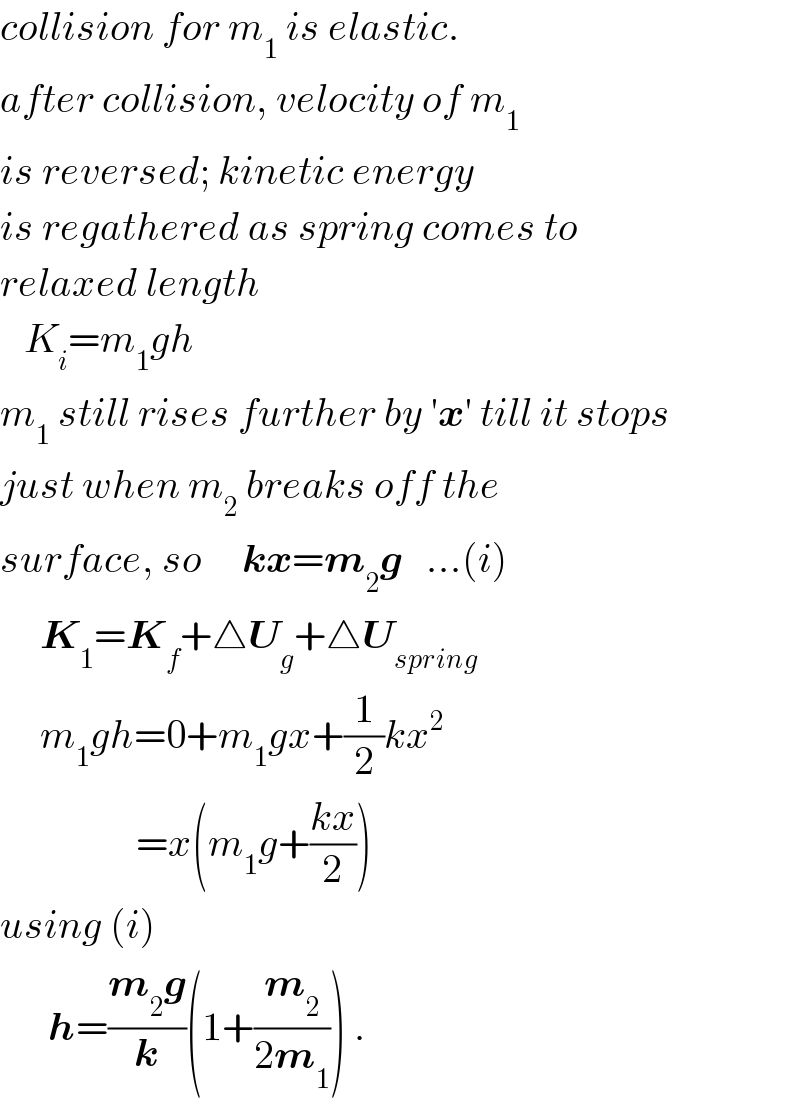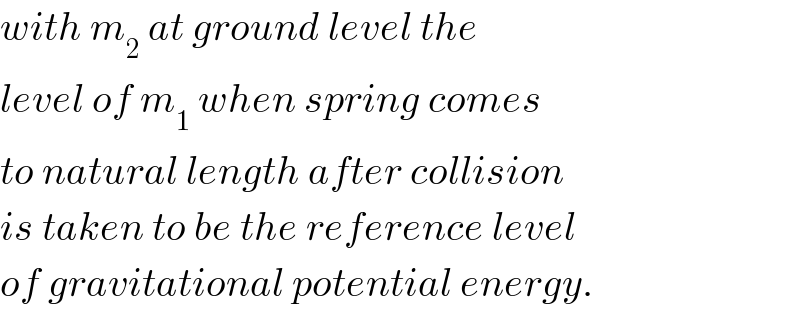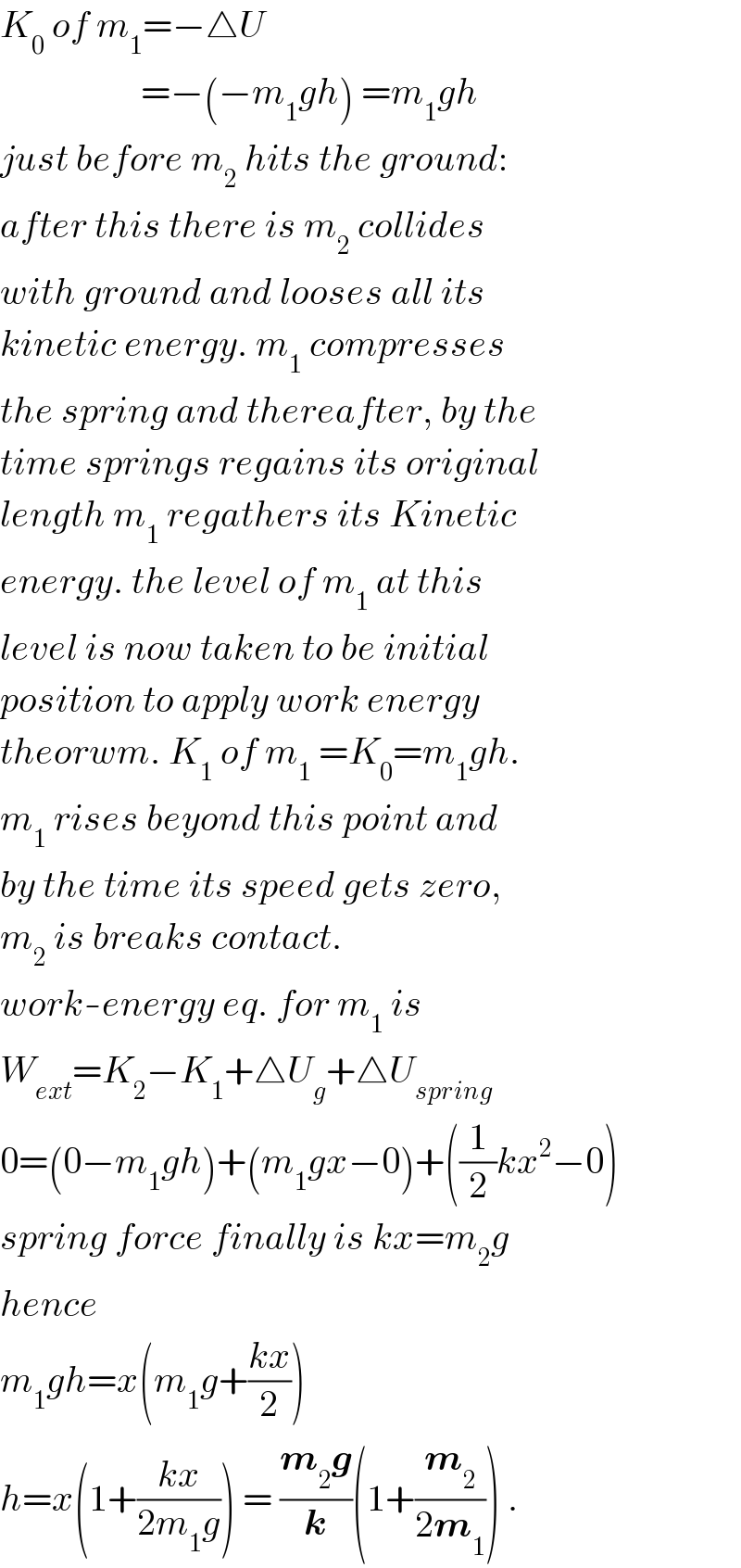
Question and Answers Forum
Question Number 28585 by Tinkutara last updated on 27/Jan/18

Answered by ajfour last updated on 27/Jan/18

Commented by Tinkutara last updated on 27/Jan/18
Why collision of m1 is elastic?
Commented by ajfour last updated on 27/Jan/18

Commented by Tinkutara last updated on 28/Jan/18
But what is the datum assumed here?
Commented by ajfour last updated on 28/Jan/18
in simpler words please ..
Commented by Tinkutara last updated on 28/Jan/18
What is the reference line assumed for calculating potential energy?
Commented by ajfour last updated on 28/Jan/18

Commented by Tinkutara last updated on 28/Jan/18

Commented by ajfour last updated on 28/Jan/18

Commented by Tinkutara last updated on 28/Jan/18
But potential energy when measured downwards should be taken negative or not?
Commented by ajfour last updated on 28/Jan/18

Commented by Tinkutara last updated on 29/Jan/18
Thank you very much Sir! I got the answer.
